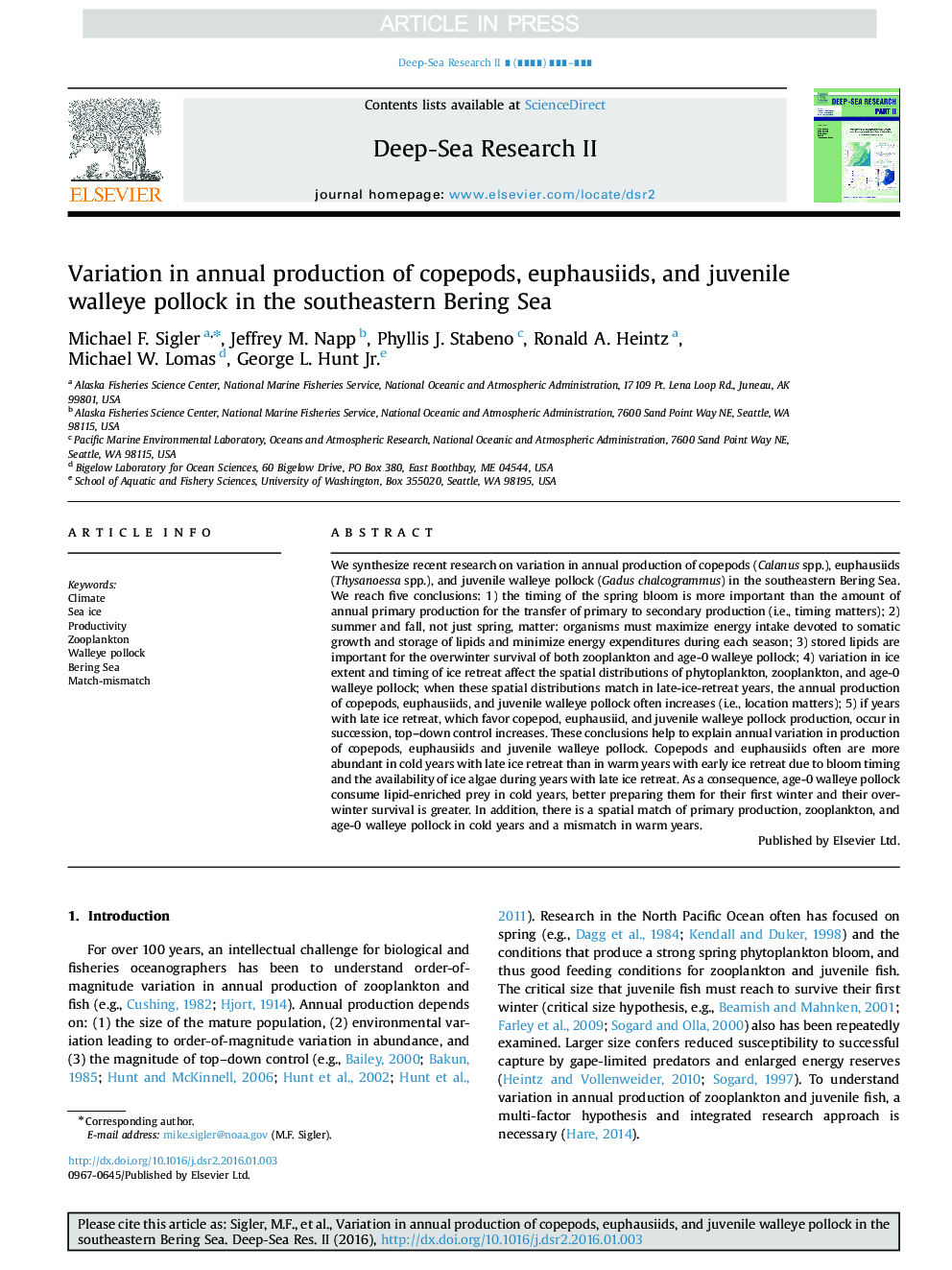| کد مقاله | کد نشریه | سال انتشار | مقاله انگلیسی | نسخه تمام متن |
|---|---|---|---|---|
| 5764992 | 1626408 | 2016 | 12 صفحه PDF | دانلود رایگان |
عنوان انگلیسی مقاله ISI
Variation in annual production of copepods, euphausiids, and juvenile walleye pollock in the southeastern Bering Sea
دانلود مقاله + سفارش ترجمه
دانلود مقاله ISI انگلیسی
رایگان برای ایرانیان
کلمات کلیدی
موضوعات مرتبط
مهندسی و علوم پایه
علوم زمین و سیارات
زمین شناسی
پیش نمایش صفحه اول مقاله

چکیده انگلیسی
We synthesize recent research on variation in annual production of copepods (Calanus spp.), euphausiids (Thysanoessa spp.), and juvenile walleye pollock (Gadus chalcogrammus) in the southeastern Bering Sea. We reach five conclusions: 1) the timing of the spring bloom is more important than the amount of annual primary production for the transfer of primary to secondary production (i.e., timing matters); 2) summer and fall, not just spring, matter: organisms must maximize energy intake devoted to somatic growth and storage of lipids and minimize energy expenditures during each season; 3) stored lipids are important for the overwinter survival of both zooplankton and age-0 walleye pollock; 4) variation in ice extent and timing of ice retreat affect the spatial distributions of phytoplankton, zooplankton, and age-0 walleye pollock; when these spatial distributions match in late-ice-retreat years, the annual production of copepods, euphausiids, and juvenile walleye pollock often increases (i.e., location matters); 5) if years with late ice retreat, which favor copepod, euphausiid, and juvenile walleye pollock production, occur in succession, top-down control increases. These conclusions help to explain annual variation in production of copepods, euphausiids and juvenile walleye pollock. Copepods and euphausiids often are more abundant in cold years with late ice retreat than in warm years with early ice retreat due to bloom timing and the availability of ice algae during years with late ice retreat. As a consequence, age-0 walleye pollock consume lipid-enriched prey in cold years, better preparing them for their first winter and their overwinter survival is greater. In addition, there is a spatial match of primary production, zooplankton, and age-0 walleye pollock in cold years and a mismatch in warm years.
ناشر
Database: Elsevier - ScienceDirect (ساینس دایرکت)
Journal: Deep Sea Research Part II: Topical Studies in Oceanography - Volume 134, December 2016, Pages 223-234
Journal: Deep Sea Research Part II: Topical Studies in Oceanography - Volume 134, December 2016, Pages 223-234
نویسندگان
Michael F. Sigler, Jeffrey M. Napp, Phyllis J. Stabeno, Ronald A. Heintz, Michael W. Lomas, George L. Jr.,